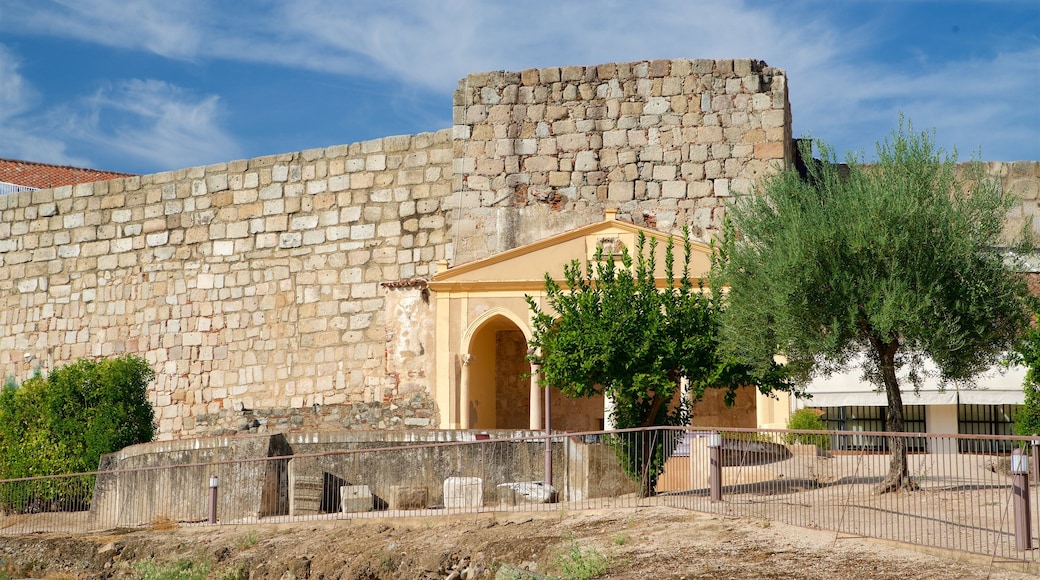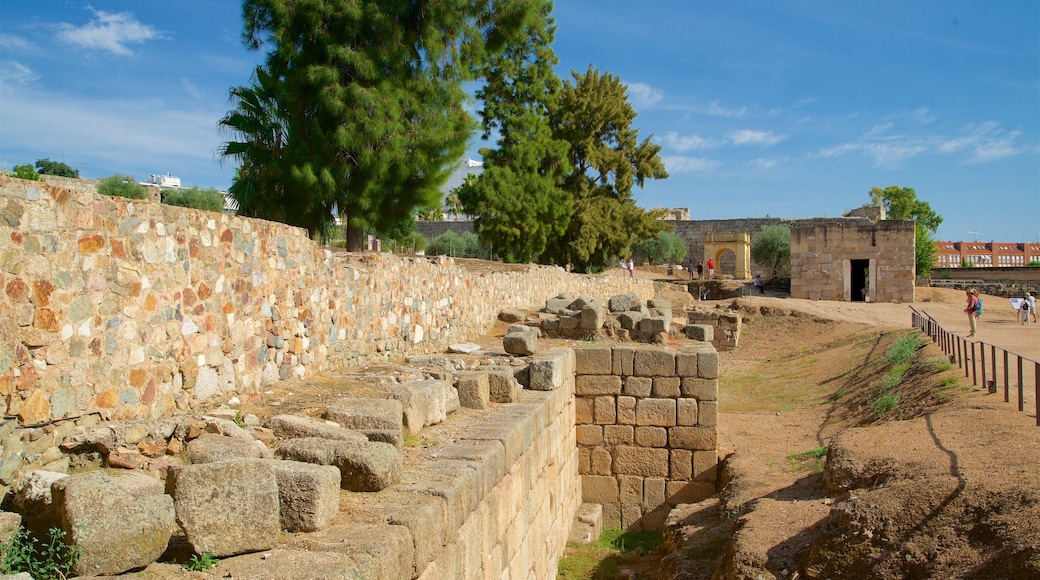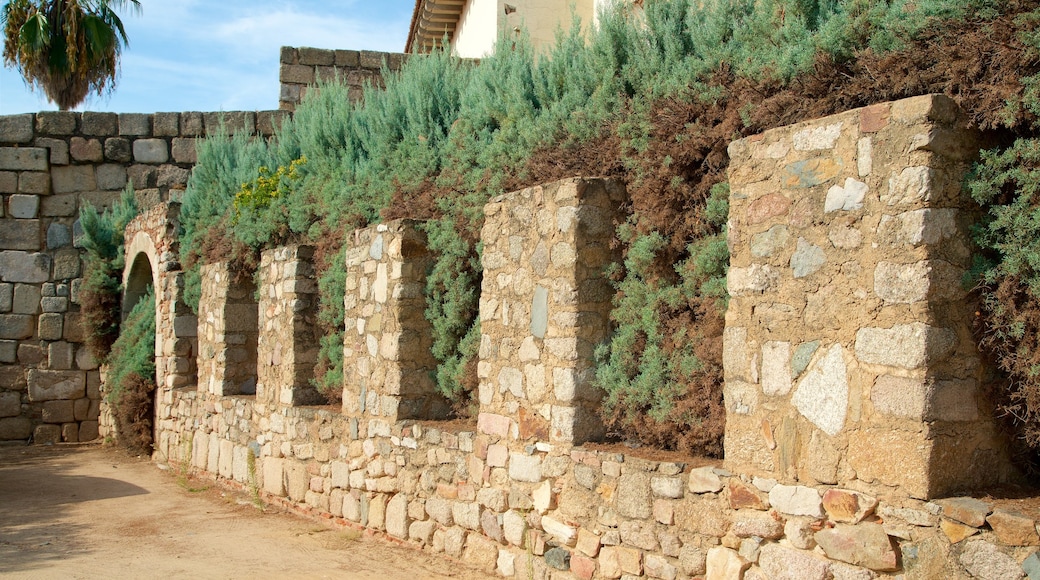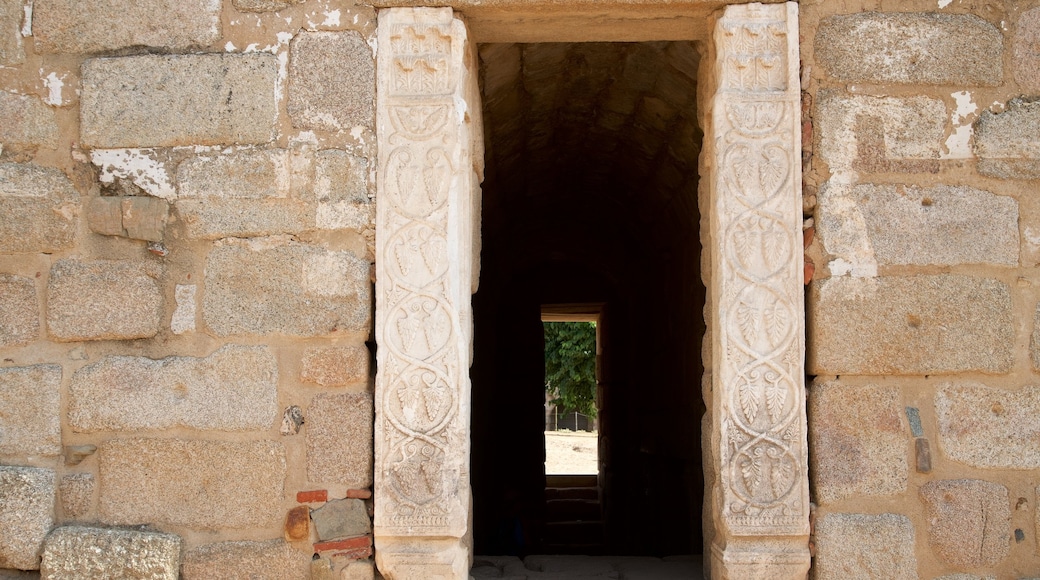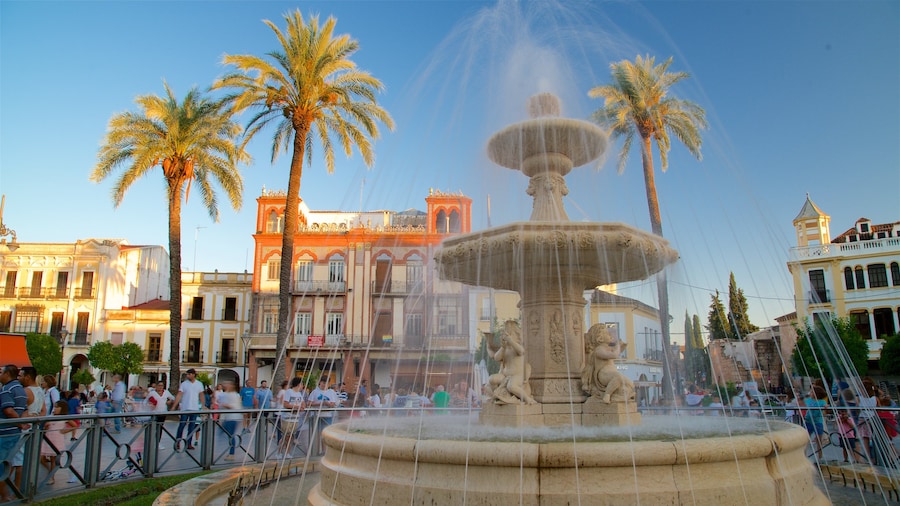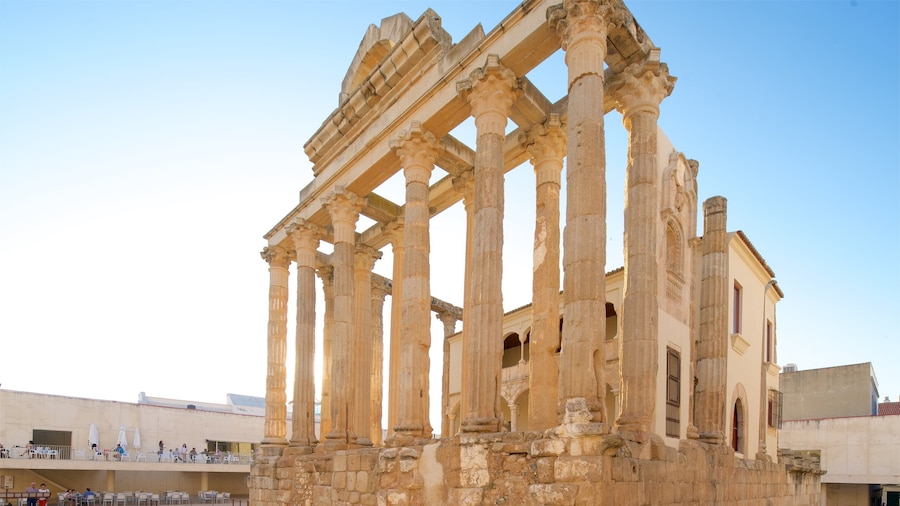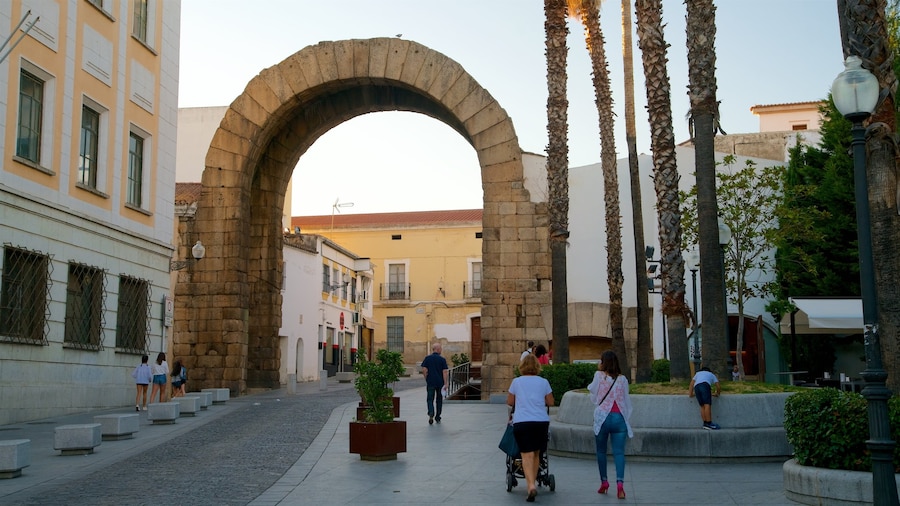In addition to its Roman buildings, Mérida has many other historical attractions, including this Arab stronghold from the 9th century.
When Mérida's 9th-century Muslim rulers wanted to protect themselves from local uprisings and revolts, they built the magnificent Alcazaba. See this impressive Arab fortification with its thick walls and 25 towers. While the remaining walls clearly define the overall structure, note that much of the original interior has not survived.
Over the centuries, the Alcazaba served numerous functions, including being the headquarters of the local administration and a refuge for citizens during conflicts. It served as the point of passage into the city, preventing entrance by undesirables. Before stepping inside the walled enclosure, admire its grandeur. The citadel was built with material from former Roman and Visigoth constructions. Its walls are 33 feet (10 meters) tall and 9 feet (2.7 meters) thick.
Access the interior through a small horseshoe arch. Above it is a replica of the Kufic inscription that marked the date of the stronghold’s construction, 835. Wander through the site to see fragments of its ancient remains.
Stop at the cistern that supplied water to the fortification. It is one of the few original surviving structures. Two Visigoth pilasters frame the doorway. Head through this entrance and down the flight of steps to see where the water collected.
Leave the cistern and continue your exploration of the site. Inspect remains that predate the building of the Alcazaba. These include a section of the ancient street of cardo minor and relics of an old Roman city house.
Located in the city's historical center near the Puente Romano, the Arab fortification is within a short walking distance of many other ancient attractions. If you don’t want to walk, arrive by public transportation or car. Pay to park in the nearby garage.
The Alcazaba is open daily except for Christmas Eve, Christmas Day, New Year's Eve and New Year's Day. Admission charges apply, but children under the age of 8 enter for free. To save money, buy a combined ticket that includes other historic sites, including the Roman Theatre and the Circo Romano.
